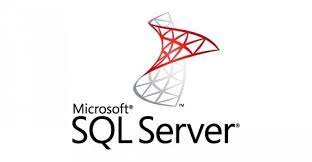SQL

SQL (Structured Query Language) is a domain-specific language used in programming and designed for managing data held in a relational database management system (RDBMS), or for stream processing in a relational data stream management system (RDSMS). It is particularly useful in handling structured data, i.e. data incorporating relations among entities and variables.
SQL offers two main advantages over older read–write APIs such as ISAM or VSAM. Firstly, it introduced the concept of accessing many records with one single command. Secondly, it eliminates the need to specify how to reach a record, e.g. with or without an index.
Originally based upon relational algebra and tuple relational calculus, SQL consists of many types of statements, which may be informally classed as sublanguages, commonly: a data query language (DQL), a data definition language (DDL), a data control language (DCL), and a data manipulation language (DML). The scope of SQL includes data query, data manipulation (insert, update and delete), data definition (schema creation and modification), and data access control. Although SQL is essentially a declarative language (4GL), it also includes procedural elements.
 PostgreSQL, also known as Postgres, is a free and open-source
relational database management system (RDBMS) emphasizing extensibility and SQL compliance.
It was originally named POSTGRES, referring to its origins as a successor to the Ingres
database developed at the University of California, Berkeley.
In 1996, the project was renamed to PostgreSQL to reflect its support for SQL. After a
review in 2007,
the development team decided to keep the name PostgreSQL and the alias Postgres.
PostgreSQL, also known as Postgres, is a free and open-source
relational database management system (RDBMS) emphasizing extensibility and SQL compliance.
It was originally named POSTGRES, referring to its origins as a successor to the Ingres
database developed at the University of California, Berkeley.
In 1996, the project was renamed to PostgreSQL to reflect its support for SQL. After a
review in 2007,
the development team decided to keep the name PostgreSQL and the alias Postgres.
PostgreSQL is a powerful, open source object-relational database system with over 30 years of active development that has earned it a strong reputation for reliability, feature robustness, and performance.
PostgreSQL features transactions with Atomicity, Consistency, Isolation, Durability (ACID) properties, automatically updatable views, materialized views, triggers, foreign keys, and stored procedures. It is designed to handle a range of workloads, from single machines to data warehouses or Web services with many concurrent users.
 MySQL is an open-source relational database management system
(RDBMS). Its name is a combination of "My",
the name of co-founder Michael Widenius's daughter, and "SQL", the abbreviation for
Structured Query Language.
A relational database organizes data into one or more data tables in which data types may be
related to each other;
these relations help structure the data.
SQL is a language programmers use to create, modify and extract data from the relational
database,
as well as control user access to the database.
In addition to relational databases and SQL, an RDBMS like MySQL works with an operating
system to implement
a relational database in a computer's storage system,
manages users, allows for network access and facilitates testing database integrity and
creation of backups.
MySQL is an open-source relational database management system
(RDBMS). Its name is a combination of "My",
the name of co-founder Michael Widenius's daughter, and "SQL", the abbreviation for
Structured Query Language.
A relational database organizes data into one or more data tables in which data types may be
related to each other;
these relations help structure the data.
SQL is a language programmers use to create, modify and extract data from the relational
database,
as well as control user access to the database.
In addition to relational databases and SQL, an RDBMS like MySQL works with an operating
system to implement
a relational database in a computer's storage system,
manages users, allows for network access and facilitates testing database integrity and
creation of backups.
MySQL is the world's most popular open source database. Whether you are a fast growing web property, technology ISV or large enterprise, MySQL can cost-effectively help you deliver high performance, scalable database applications.
 SQLite is an in-process library that implements a
self-contained, serverless, zero-configuration, transactional SQL database engine.
The code for SQLite is in the public domain and is thus free for use for any purpose,
commercial or private.
SQLite is the most widely deployed database in the world with more applications than we can
count, including several high-profile projects.
SQLite is an in-process library that implements a
self-contained, serverless, zero-configuration, transactional SQL database engine.
The code for SQLite is in the public domain and is thus free for use for any purpose,
commercial or private.
SQLite is the most widely deployed database in the world with more applications than we can
count, including several high-profile projects.
SQLite is an embedded SQL database engine. Unlike most other SQL databases, SQLite does not have a separate server process. SQLite reads and writes directly to ordinary disk files. A complete SQL database with multiple tables, indices, triggers, and views, is contained in a single disk file. The database file format is cross-platform - you can freely copy a database between 32-bit and 64-bit systems or between big-endian and little-endian architectures. These features make SQLite a popular choice as an Application File Format.
 Microsoft SQL Server is a relational database management system
developed by Microsoft. As a database server, it is a software product with the primary
function of storing and retrieving
data as requested by other software applications—which may run either on the same computer
or on another computer across a network (including the Internet).
Microsoft markets at least a dozen different editions of Microsoft SQL Server, aimed at
different audiences and for workloads ranging from small single-machine applications
to large Internet-facing applications with many concurrent users.
Microsoft SQL Server is a relational database management system
developed by Microsoft. As a database server, it is a software product with the primary
function of storing and retrieving
data as requested by other software applications—which may run either on the same computer
or on another computer across a network (including the Internet).
Microsoft markets at least a dozen different editions of Microsoft SQL Server, aimed at
different audiences and for workloads ranging from small single-machine applications
to large Internet-facing applications with many concurrent users.
